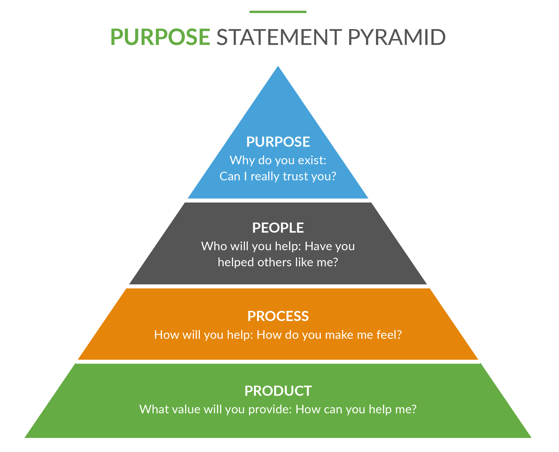“We’re all in this together.”
Throughout the COVID-19 crisis, we’ve heard this statement from government officials, friends, and companies. This call for solidarity highlights an important shift that has been taking place in consumer behavior and capitalism: profit is no longer king; purpose is.
A growing number of leaders are championing what they call conscious capitalism—building companies based on the idea their business is about more than just making a profit.
In fact, purpose is the path toward bigger profits. According to Entrepreneur magazine, conscious capitalism-inspired companies are outperforming the market by a factor of 10½.
The shift to conscious capitalism started long before COVID-19, but the pandemic has acted as a catalyst, revealing the need for companies to have a purpose beyond profits in order to compete in a world with increasingly conscious consumers.
While many retail companies have been quick to leverage purpose (think Tom’s, Bombas, or Patagonia), financial brands have been slower to adapt, relying on their products and services alone. However, in today’s digital world, financial products and services are becoming increasingly commoditized. To succeed, you need to stand out in some way, and you can do that with purpose.
In this article, I’ll share an example of what purpose at a financial brand looks like in action, and then I’ll show you how to craft and apply a purpose of your own, so that you can start on a path to profits you can be proud of.
The Impact of Purpose: Aspiration
As an example of the impacts of purpose on a financial brand, just look at Aspiration, which launched in 2015 and has now raised over $100 million in capital while also acquiring over 1 million customer accounts. In fact, they’ve reported adding over 100,000 new accounts every single month.
What is Aspiration's purpose?
It’s twofold:
Helping people save money
Helping to save the planet.
They distilled that purpose down to four words: “Do well, do good.”
That’s how Aspiration communicated their purpose. But then they had to actually act on their words—and they did, even down to the way they positioned their financial products. One of Aspiration’s key product offerings is their “pay-what’s-fair” offer that allows consumers to pay Aspiration whatever fee they believe is a fair amount for their account.
They live out their purpose of helping save the planet by using only fossil-fuel free accounts. In 2019, there was a lot of bad press around the four biggest global banks—JPMorgan Chase, Wells Fargo, Citi, and Bank of America—for how they were funding fossil fuels. By leaning into the story and positioning themselves against fossil-fuel funding, Aspiration was able to scoop up over 200,000 ex-Wells Fargo customers who left the bank over its recent fossil-fuel debacle.
In addition to a variety of other initiatives, they’re giving 10 percent of every dollar they generate from customers to one of seven charities (chosen by their customers) focusing on helping struggling Americans build a better life.
Naturally, there was some skepticism among investors when Aspiration launched these various strategies, but with their pace of growth, they’re proving the skeptics wrong. By articulating and acting on a purpose, Aspiration is “doing well, doing good,” and making profits in the process.
How to Craft a Purpose
So, how can you create your own purpose to propel your brand forward?
You want to distill your purpose down to a single paragraph or sentence that allows you to communicate it with clarity and simplicity.

Your purpose statement will be composed of the following four elements:
Your what: the value you create with your product or service
Your how: how you create value through your process
Your who: the people you’re creating value for
Your why: the reason you exist—how you want to make people feel
Let’s use the purpose statement of my company, Digital Growth Institute, as an example:
We simplify digital marketing and sales strategies that empower financial brands to generate 10X more loans and deposits (the what: product). We do this through the Digital Growth Method (the how: process) that provides clarity for financial brand marketing, sales, and leadership teams (the who: people) as they gain the systems, technologies, and habits they need to maximize their digital growth potential.
As a result, leadership teams no longer feel confused and frustrated about future growth as our research and insights elevate their marketing and sales teams to confidently guide 10X more people in the communities they serve beyond financial stress towards a bigger, better, and brighter future (the why: purpose).
Notice that our purpose statement really isn’t about us, Digital Growth Institute. It’s about the people we're on a mission to help—about how our services provide value and help them. By creating your own four-piece purpose in this way, you will be able to better engage and connect with your target consumers, which will lead to happy customers and more profit.
Apply Your Purpose
Once you’ve defined your purpose statement, it’s time to apply it.
Applying your purpose starts with your whole organization and culture living and communicating it internally. An added benefit of purpose is that it’s an intrinsic motivator not just externally, with consumers, but also internally, with your staff.
Then you apply your purpose externally in the communities you serve through the communication and actions of your marketing and sales teams. It’s what you say, it’s what you do, and it’s how you build trust with people. Your purpose statement also becomes a digital positioning statement to attract like minds, both internally and externally, who believe in your bigger purpose beyond the promotion of commoditized products.
As shown in the Aspiration example, you can’t simply say you have a purpose. You must reinforce your purpose through real action.
Without action, purpose is just branding. And for the most part—I hate to say it, but it’s true—the branding for most financial brands is crap. It’s just pretty pictures, colorful logos, shiny happy stock people, not real life.
When it comes to purpose, branding must transcend these shallow images. In today’s digital economy, purpose is the brand. It’s why you do what you do. But if purpose is not backed by proof (the how), the why is only skin deep, just like those pretty pictures.
Adapt or Fail
Even after the immediate crisis of COVID-19 is over, things won’t ever be exactly the same. The pandemic has proven that companies have a huge impact on the world and people’s quality of life, and consumers are developing new buying habits that reflect this reality.
As said in Spider-Man, “With great power comes great responsibility.”
Capitalism doesn’t need to be a zero-sum game, where you maximize profit at the expense of others. In today’s digital economy, there’s an opportunity to transform a mindset of scarcity into a mindset of abundance, allowing for both purpose and profits.
Consumers have more choice and are more well informed than ever. If you don’t adapt, you will fail. So craft a purpose, back it up with action, and inspire consumers to choose you.
This article was originally published on June 11, 2020. All content © 2024 by Digital Growth Institute and may not be reproduced by any means without permission.





